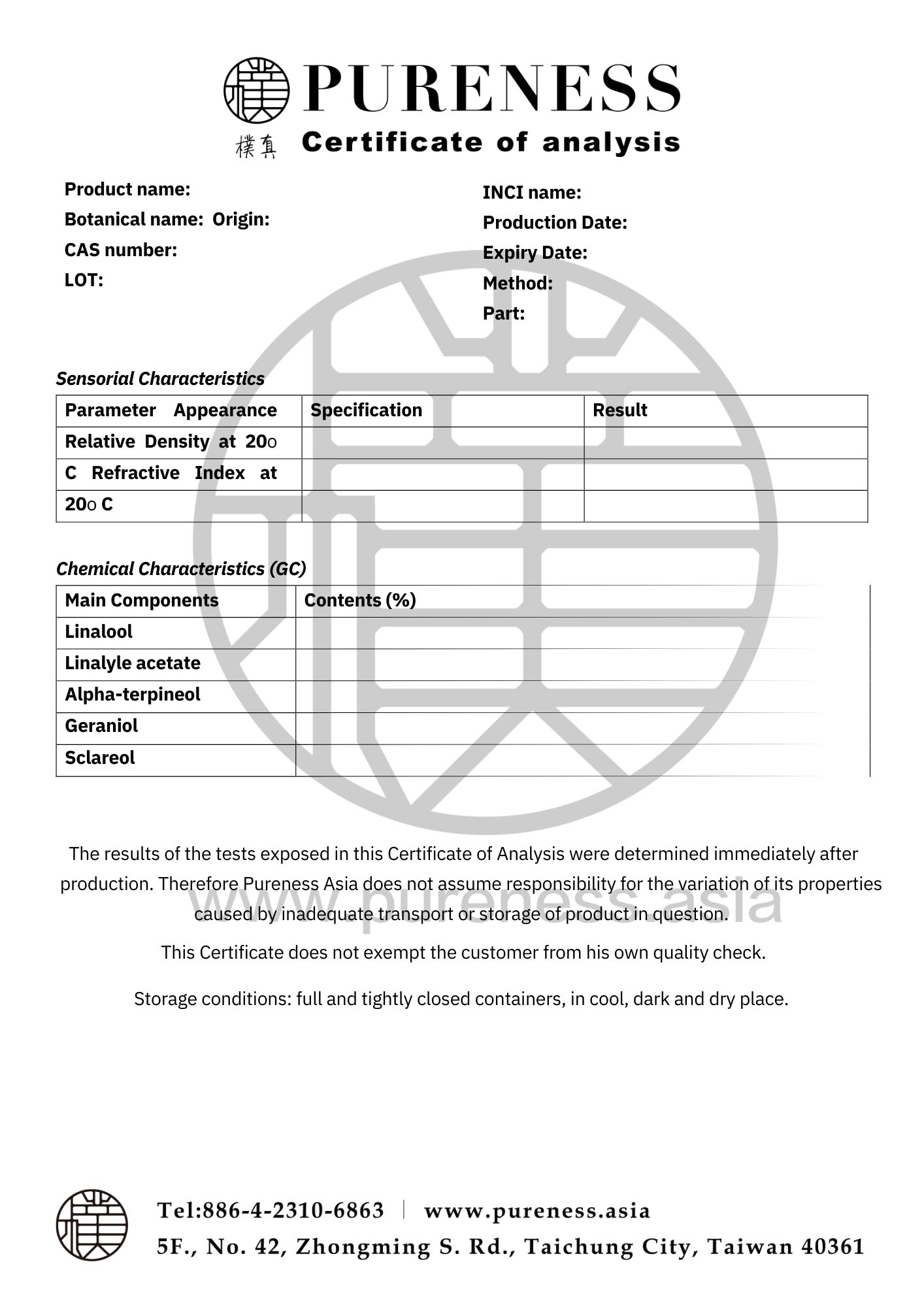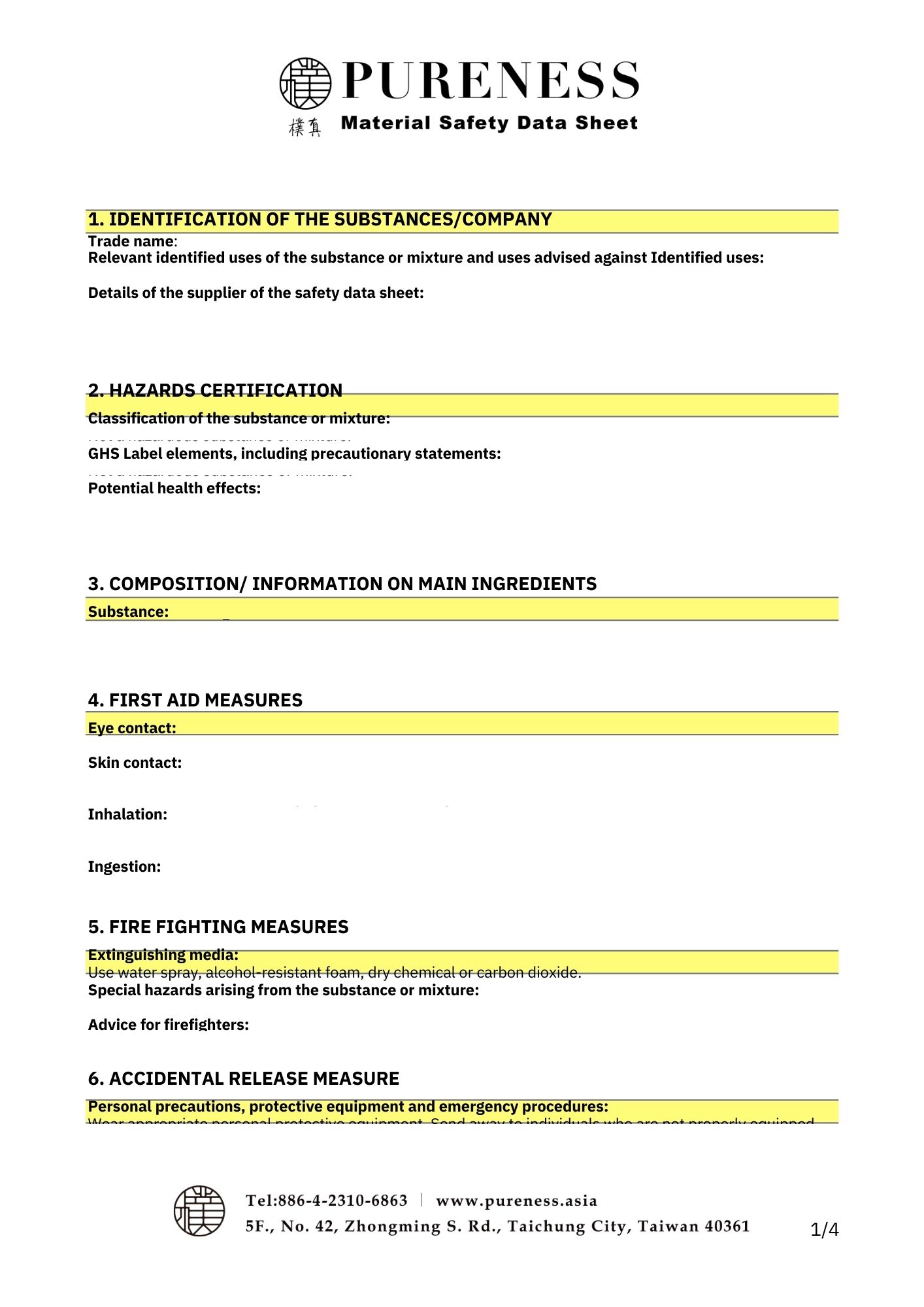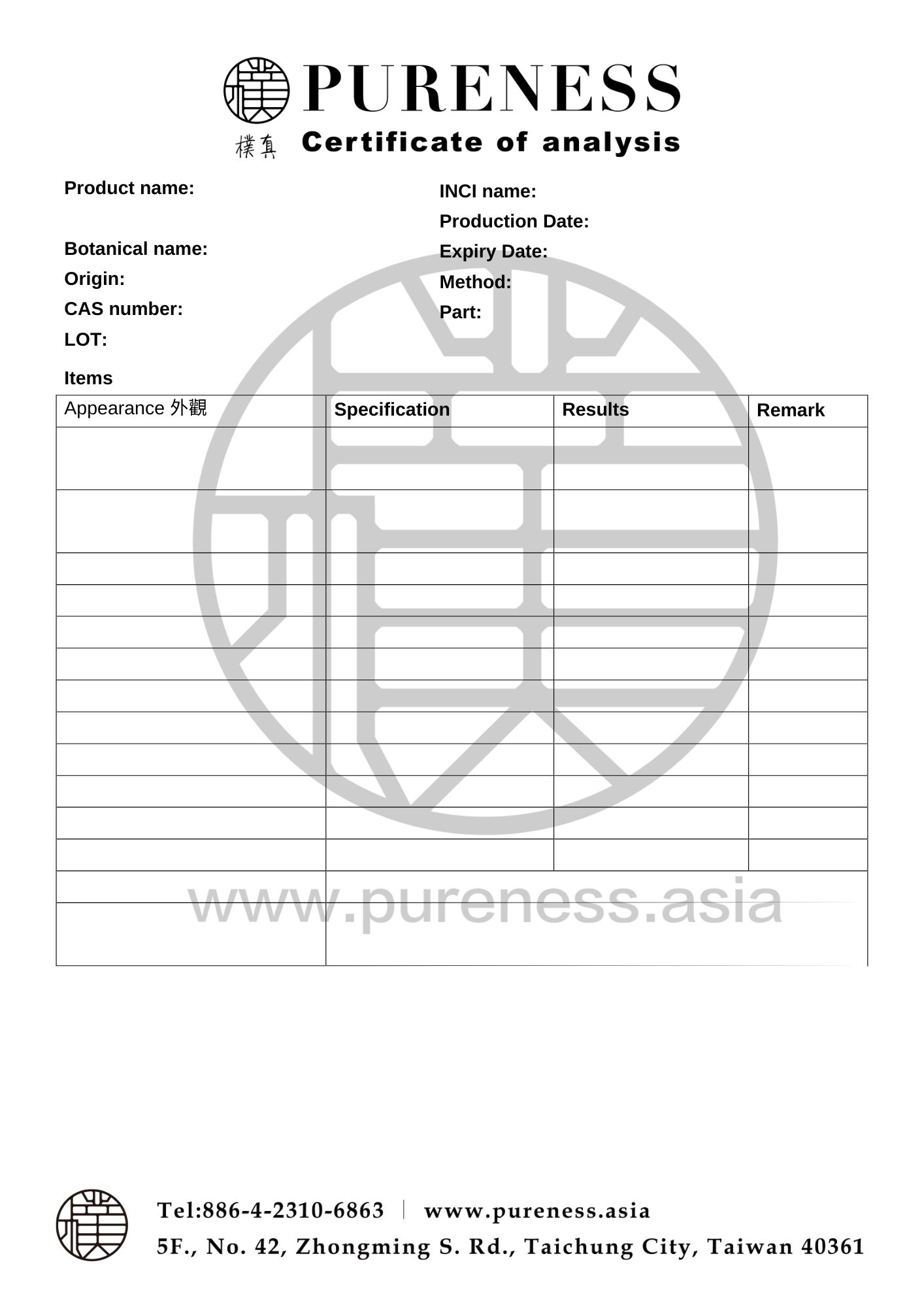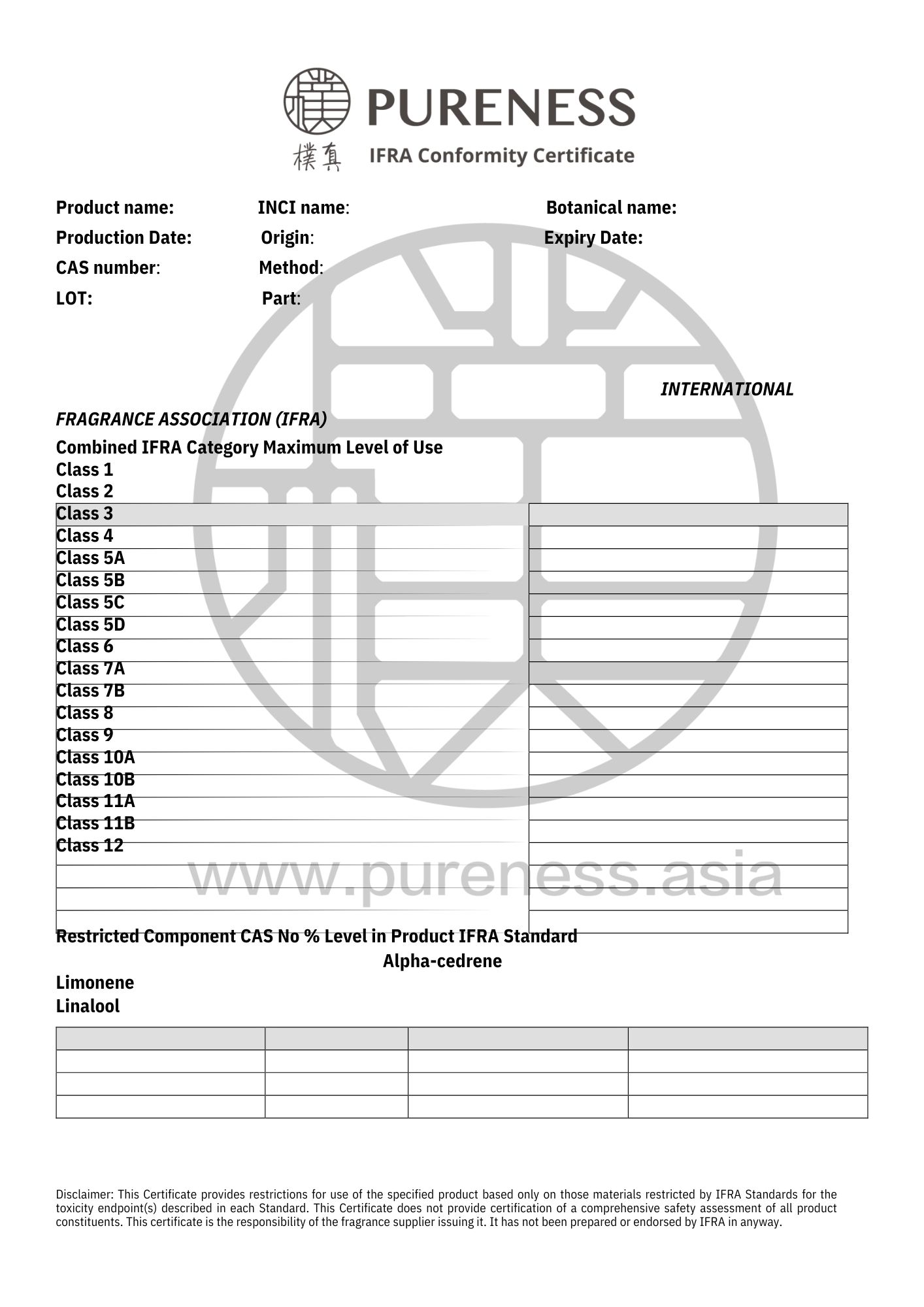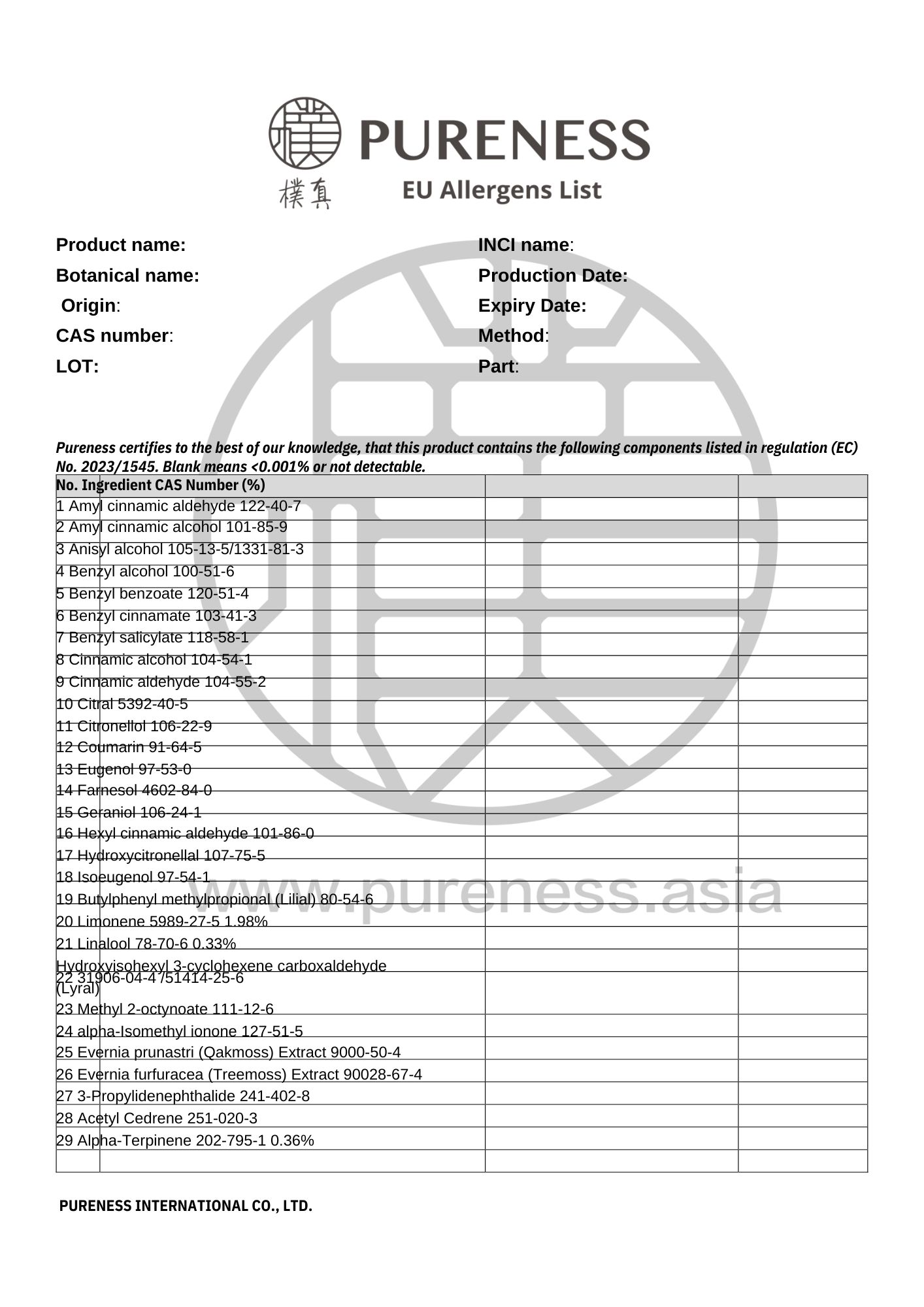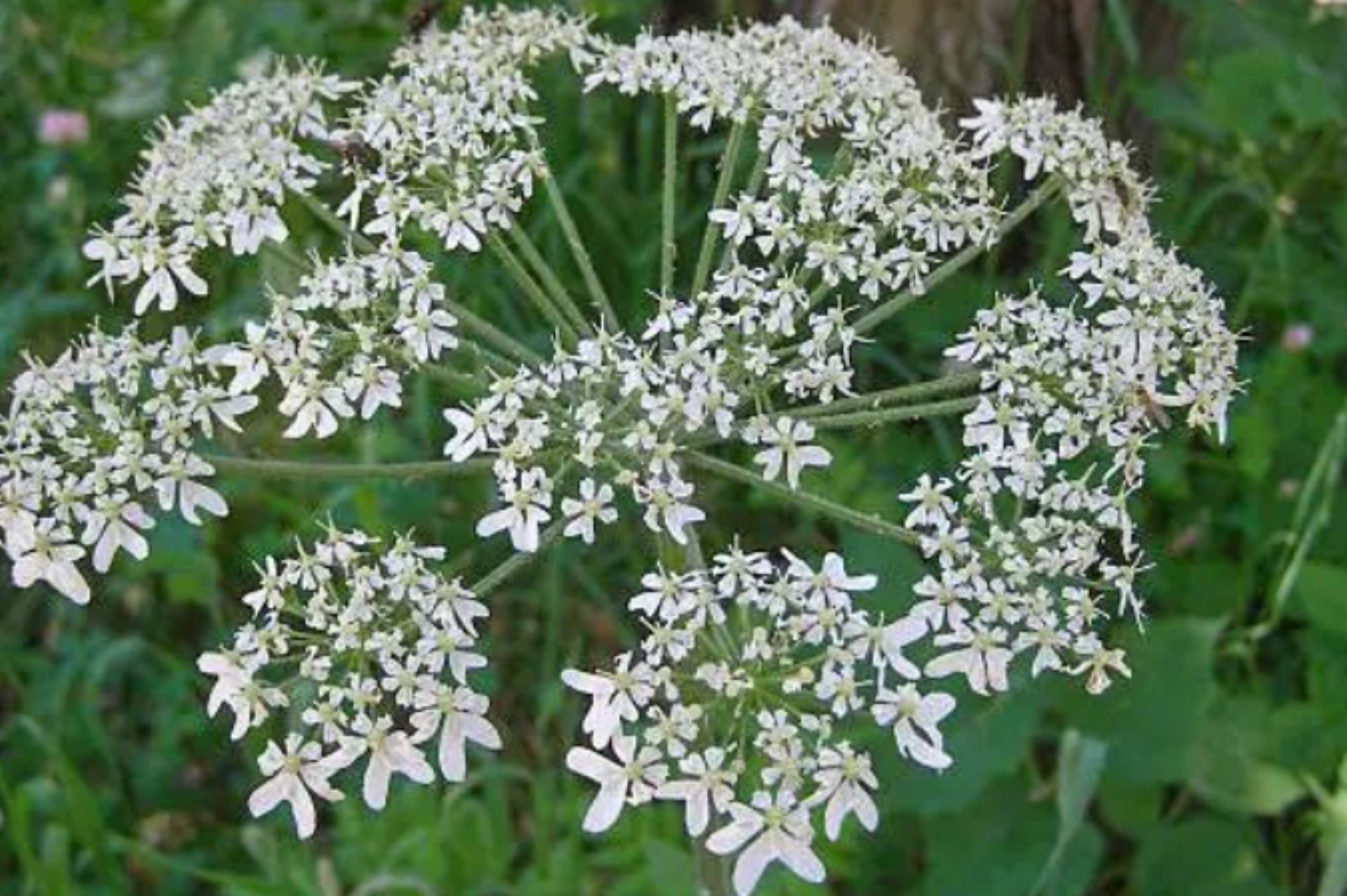
Chuanxiong
Scientific name|Ligusticum striatum
Origin|China
Classification|Spices series
Specifications|500g-25kg Please contact sales for details
Extraction part|Root
Extraction method | CO2
Plant family|Apiaceae
Aroma|A rich herbal aroma with a hint of sweetness
▎Essential Oil Introduction
Chuanxiong (Ligusticum striatum) is a perennial herb from the Apiaceae family. Known for its medicinal properties. The plant features irregular, nodular, globular rhizomes that are 2 to 7 cm in diameter, with a yellow-brown, rough, and wrinkled surface marked by numerous parallel raised rings. The texture is firm and difficult to break, and the cross-section is yellowish-white or grayish-yellow with scattered yellow-brown oil chambers, displaying a wavy ring pattern.
Chuanxiong thrives in temperate and humid climates with plenty of sunlight. During the seedling stage, it should be protected from strong light and high temperatures. The soil must be loose, fertile, and well-drained, ideally sandy loam rich in organic matter. It is primarily cultivated in China's Yunnan, Guizhou, Guangxi, and Sichuan provinces, with cultivation often done artificially. For medicinal use, Chuanxiong is dried and processed by slicing or stir-frying with wine. The Dujiangyan area is known as the original habitat of Chuanxiong, with a cultivation history of over a thousand years. Due to its unique natural conditions, the quality of Chuanxiong here is exceptional. In traditional Chinese medicine, Chuanxiong is highly valued for its properties: it is pungent, warm, and affects the liver, gallbladder, and pericardium meridians.
In the early Tang Dynasty, the medicinal expert Sun Simiao discovered Chuanxiong while foraging for herbs on Mount Qingcheng in Sichuan. He observed that a diseased female crane recovered completely after eating plants with small white flowers and carrot-like leaves. He suspected the recovery was due to these plants and, after experimentation, found that Chuanxiong could invigorate blood circulation, regulate menstruation, and relieve pain. He brought the herb down the mountain and used it to treat patients effectively. Delighted with its efficacy, Sun Simiao composed the lines: "Qingcheng is the most secluded place under heaven, the best cave in western Sichuan. Where the immortal crane passed, the celestial medicine descends." Thus, the herb was named Chuanxiong.
▎Component Analysis
|Main component: Lactones
Chuanxiong (Ligusticum striatum) contains volatile oils, alkaloids (such as ligustrazine), phenolic compounds (such as ferulic acid), lactones, vitamin A, folic acid, sucrose, and fatty oils.
The essential oil is extracted using supercritical CO2, with the rhizome containing about 1% volatile oil. The oil contains 40 identified components, making up 93.64% of the volatile oil, with the main components being ligustilide (58%), 3-butylphthalide (5.29%), and sabinene (6.08%). The lactone compounds in the rhizome include butylidene phthalide, sankyunolide, neocnidilide, 4-hydroxy-3-butyl phthalide, chuanxingol, 2,2′-diligustilide, and 3-butyl-3,6, 7-trihydroxy-4,5,6,7-tetrahydrophthalide.
|Research Validation
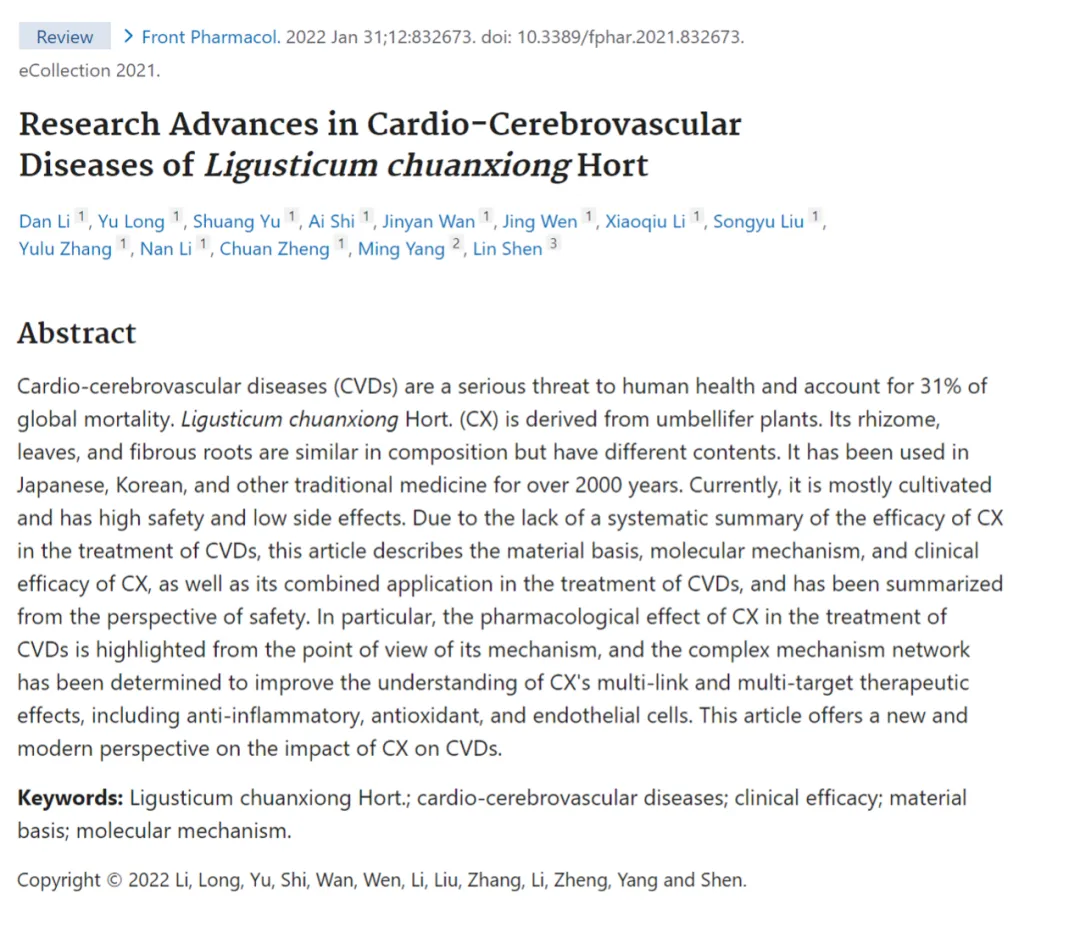
▸ Research on Chuanxiong offers new and modern perspectives on its impact on cardiovascular diseases.
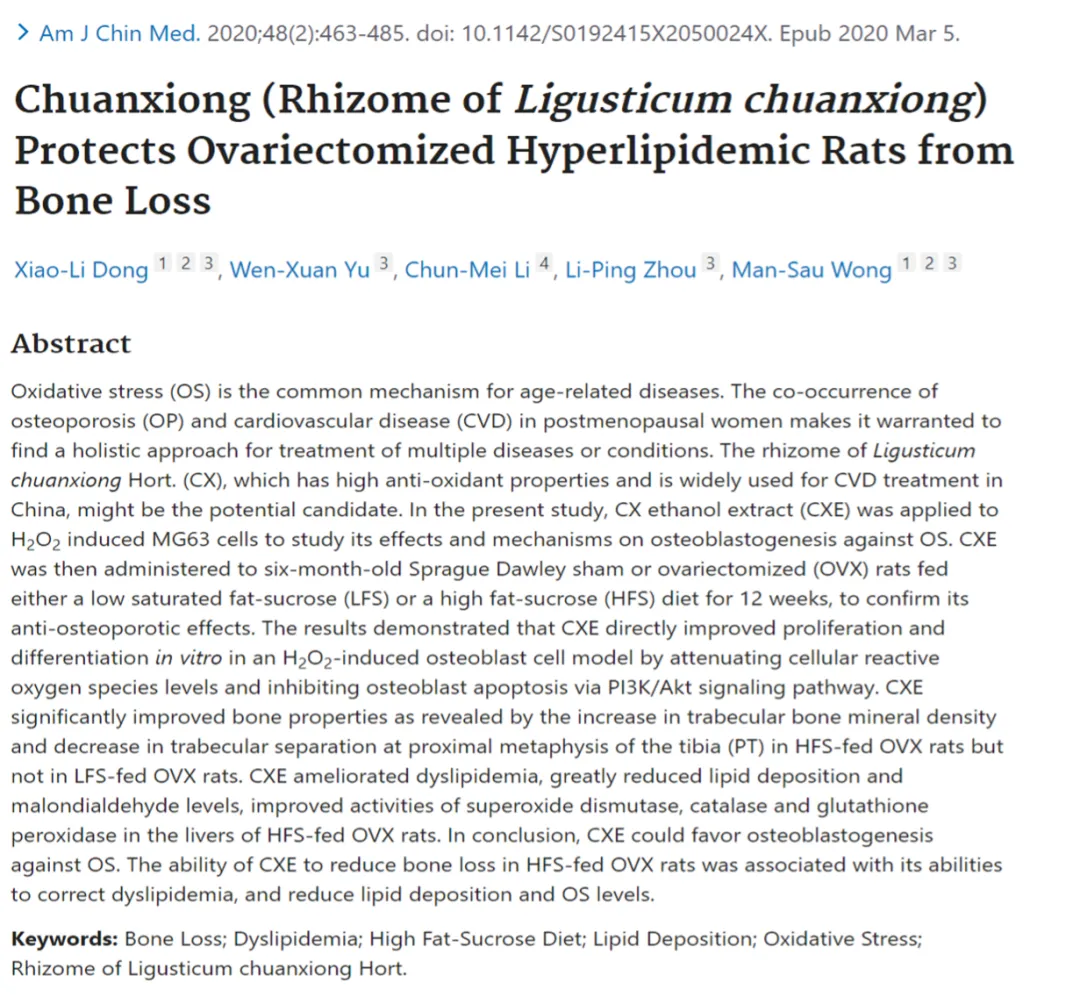
▸ Studies have shown that Chuanxiong rhizome extract has potential effects in protecting against bone loss in ovariectomized rats with lipid metabolism disorders.
|Raw Material Certifications
To obtain relevant certification information, please contact us on WhatsApp.
▎References
- Li D, et al. Research Advances in Cardio-Cerebrovascular Diseases of Ligusticum chuanxiong Hort. Front Pharmacol. 2022. Jan 31;12:832673.
- Xiang C, et al. Network Pharmacology and Molecular Docking to Elucidate the Potential Mechanism of Ligusticum Chuanxiong Against Osteoarthritis. Front Pharmacol. 2022. Apr 14;13:854215.
- Wang J, et al. The isolation, structural features and biological activities of polysaccharide from Ligusticum chuanxiong: A review. Carbohydr Polym. 2022. Jun 1;285:118971.
- Qin Y, et al. Ligusticum chuanxiong Hort as a medicinal and edible plant foods: Antioxidant, anti-aging and neuroprotective properties in Caenorhabditis elegans. Front Pharmacol. 2022. Octies in Caenorhabditis elegans. Front Pharmacol. 2022. Oct 26;
- Chen H, et al. Antifungal Effects and Active Components of Ligusticum chuanxiong. Molecules. 2022. Jul 19;27(14):4589.
- Yu B, et al. Synergic Neuroprotection Between Ligusticum Chuanxiong Hort and Borneol Against Ischemic Stroke by Neurogenesis via Modulating Reactive Astrogliosis and Maintaining the Blood-Brain Barrier. Front Pharmacol. 2021. Jun 16;
- Shi J, et al. The Protective Effects and Potential Mechanisms of Ligusticum chuanxiong: Focus on Anti-Inflammatory, Antioxidant, and Antiapoptotic Activities. Evid Based Complement Alternat Med. 2020. Oct 19;2020:8205983.
- Luo Y, et al. Effects of Herbal Medicines on Pain Management. Am J Chin Med. 2020 ;48(1):1-16.
- Yuan X, et al. Chemical constituents of Ligusticum chuanxiong and their anti-inflammation and hepatoprotective activities. Bioorg Chem. 2020. Aug;101:104016.
- Chen Z, et al. A systematic review on the rhizome of Ligusticum chuanxiong Hort. (Chuanxiong). Food Chem Toxicol. 2018. Sep;119:309-325.
|Some images sourced from the internet. Contact for copyright removal|
